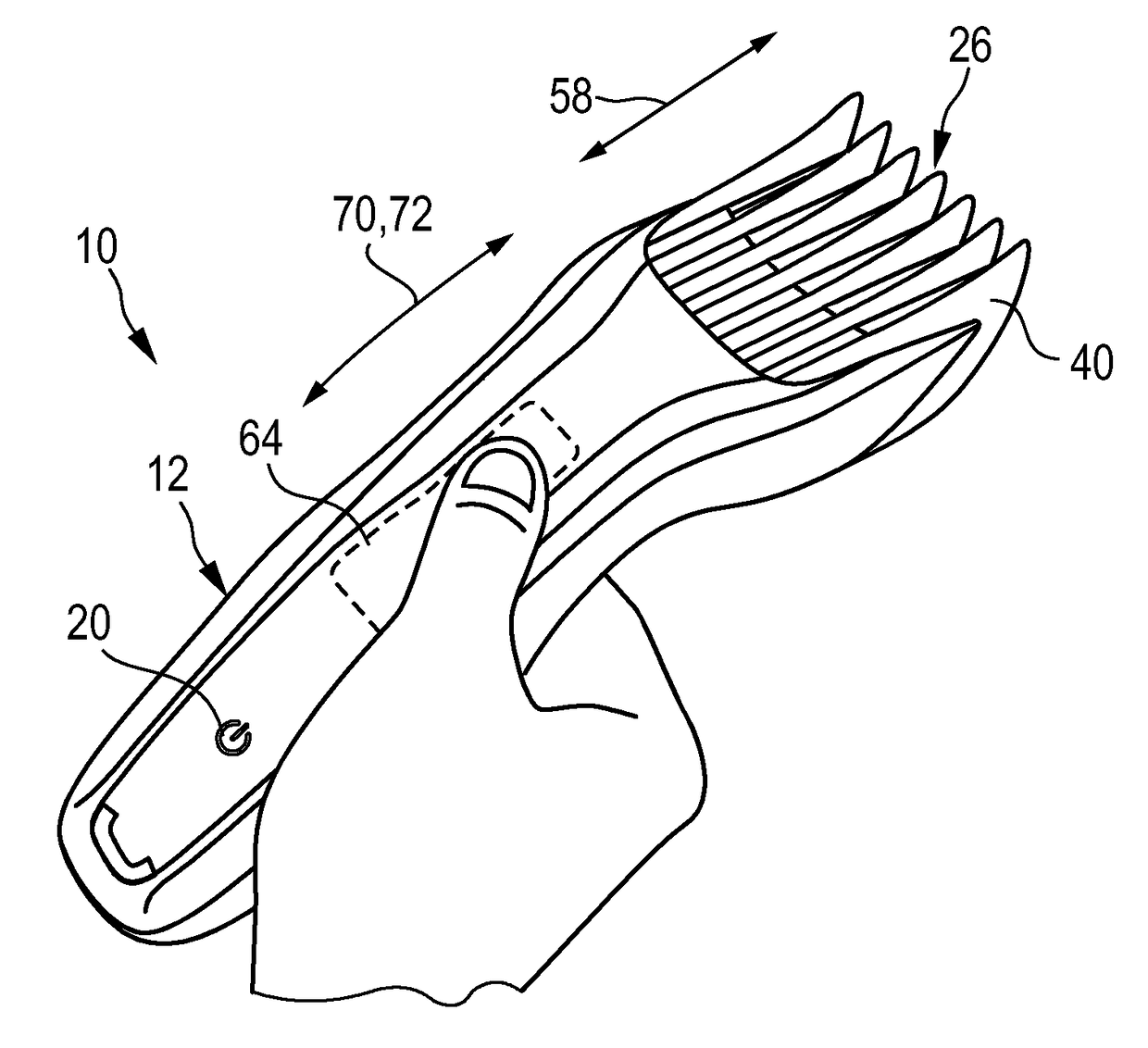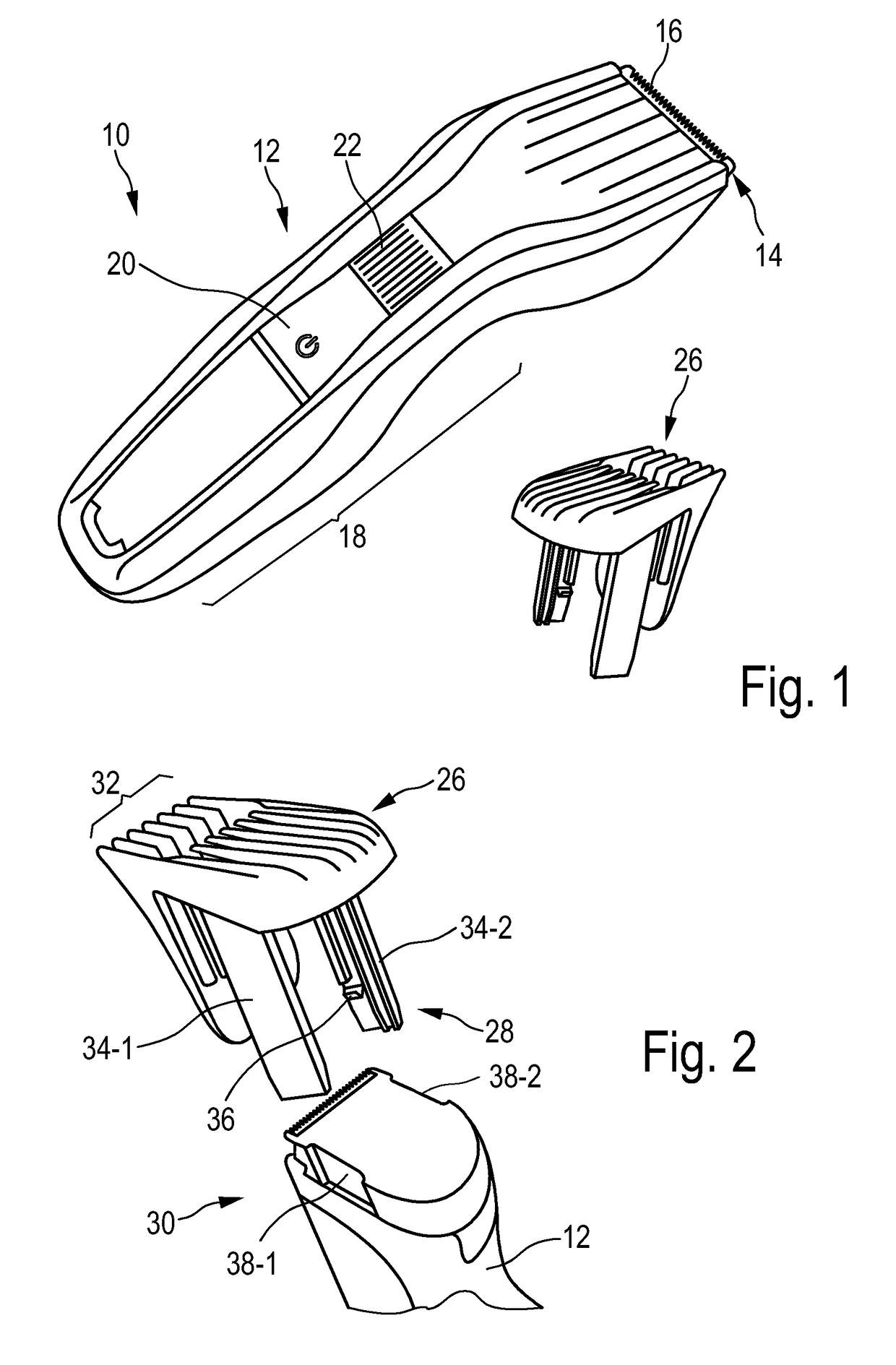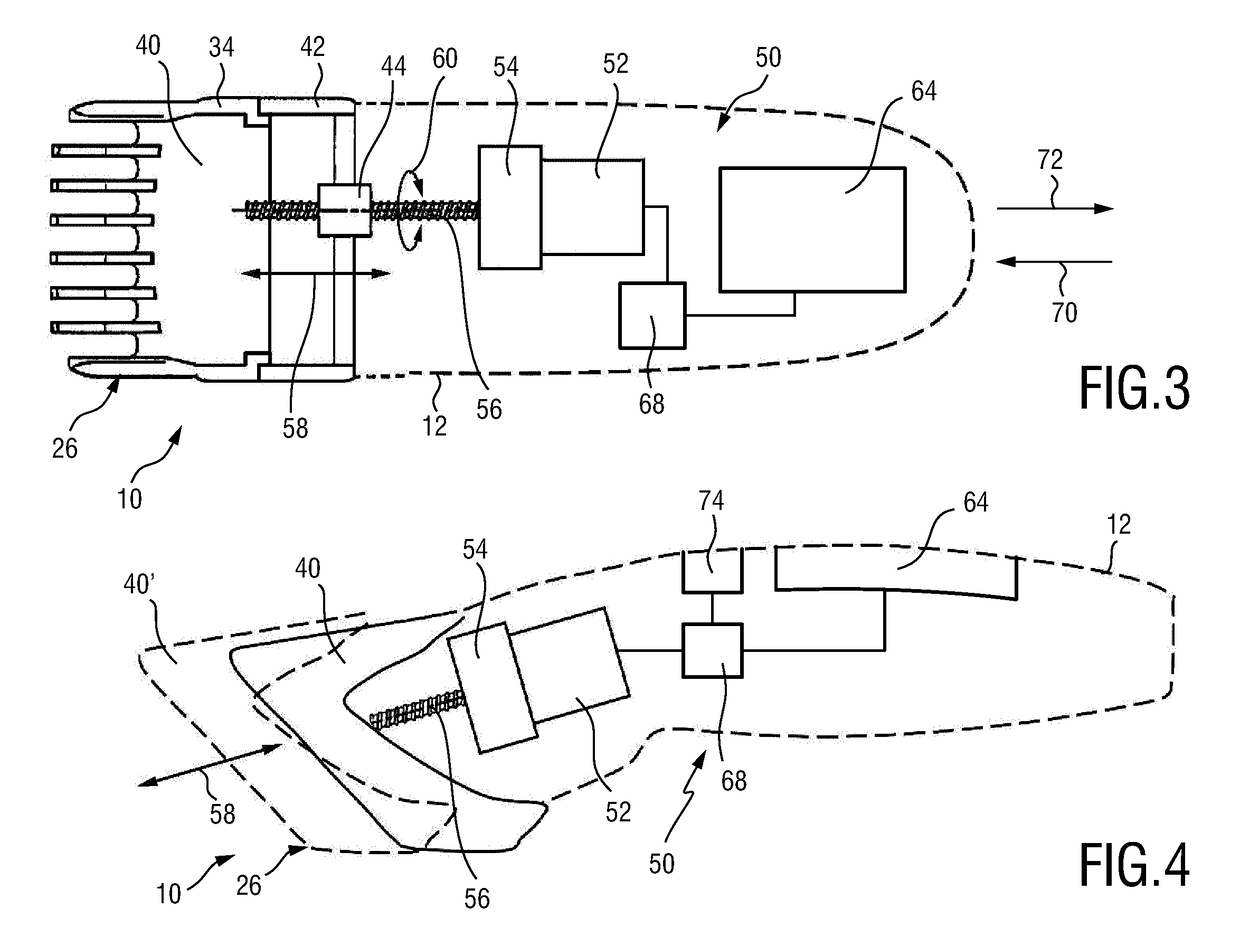Adjustable spacing comb, adkustment drive and hair cutting appliance
a technology of adjustable spacing and comb, which is applied in the direction of metal working apparatus, etc., can solve the problems of cumbersome user operation coarse positioning of adjustable spacing comb in the provided adjustment range, and affecting the operation of motorized adjustment comb, so as to reduce the tendency of soiling and dirt deposits, and facilitate the formation of devices in waterproof conditions
- Summary
- Abstract
- Description
- Claims
- Application Information
AI Technical Summary
Benefits of technology
Problems solved by technology
Method used
Image
Examples
Embodiment Construction
[0067]FIG. 1 shows a schematic perspective view of a hair cutting appliance 10, particularly an electrically-operated hair cutting appliance 10. The hair cutting appliance 10 may also be referred to as hair clipper or hair trimmer. The hair cutting appliance 10 may comprise a housing or housing portion 12 having a generally elongated shape. At a first end thereof, a cutting unit 14 may be provided. The cutting unit 14 may comprise a blade set 16. The blade set 16 may comprise a movable blade and a stationary blade that may be moved with respect to each other to cut hair. At a second end of the housing portion 12, a handle or grip portion 18 may be provided. A user may grasp or grab the housing at the grip portion 18.
[0068]The hair cutting appliance 10 may further comprise operator controls. For instance, an on-off switch or button 20 may be provided. Furthermore, a length adjustment control 22 may be provided at the housing 12 of the hair cutting appliance 10. The length adjustment ...
PUM
 Login to View More
Login to View More Abstract
Description
Claims
Application Information
 Login to View More
Login to View More - R&D
- Intellectual Property
- Life Sciences
- Materials
- Tech Scout
- Unparalleled Data Quality
- Higher Quality Content
- 60% Fewer Hallucinations
Browse by: Latest US Patents, China's latest patents, Technical Efficacy Thesaurus, Application Domain, Technology Topic, Popular Technical Reports.
© 2025 PatSnap. All rights reserved.Legal|Privacy policy|Modern Slavery Act Transparency Statement|Sitemap|About US| Contact US: help@patsnap.com



